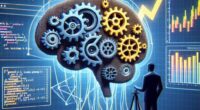Hazem Samoaa: Exploring the Impact of Trees and Graphs in AI
In the rapidly evolving field of technology, particularly within the realm of Artificial Intelligence (AI), understanding the fundamentals and complexities of data structures is essential. Trees and graphs, as core components of this foundation, play a pivotal role in modeling relationships, enabling efficient data organization, and facilitating swift data retrieval. These structures are not just theoretical concepts; they underpin a wide range of algorithms and theories that are crucial for propelling the AI research and development forward.
The significance of trees and graphs can be particularly appreciated when considering their applications within Artificial Intelligence. These data structures allow AI systems to mimic cognitive functions such as learning, problem-solving, and decision-making more efficiently. For instance, decision trees are extensively used in machine learning for classification and regression tasks. They help in breaking down a dataset into smaller subsets while simultaneously developing an associated decision tree. This process aids in decision making by stratifying complex decisions into more manageable sequences of logical choices.
Graphs, on the other hand, are indispensable when it comes to understanding and leveraging relationships and connections between data points. In scenarios involving social networks, logistical planning, and even language processing, the ability to model and analyze such interconnected data is critical. Graph-based algorithms support various AI functionalities including recommendation systems, search algorithms, and natural language processing tasks. By effectively utilizing graph theory, AI systems can navigate vast networks of data, uncovering patterns and insights that were previously unattainable.
Moreover, in the realm of complex problem-solving and optimization within AI, algorithms such as those related to pathfinding (like Dijkstra’s and A* algorithm) and network flow are profoundly influenced by graph theory. These allow AI systems to identify the most efficient routes or sequences of operations across extensive and intricately connected datasets, optimizing performance and outcomes.
The utilization of trees and graphs in AI is not static but is constantly being refined and expanded through ongoing research. Exploring new applications, enhancing algorithmic efficiency, and innovating in the ways these structures can be leveraged are key areas of focus. The dynamic nature of AI itself necessitates a continuous evolution in the methods and structures used to support its growth.
Understanding and applying the principles of trees and graphs in AI is, therefore, not just an academic exercise but a practical necessity. It enables developers and researchers to craft sophisticated AI models that learn, adapt, and make decisions more effectively. As AI continues to advance and integrate deeper into various sectors—such as healthcare, finance, automotive, and entertainment—the foundational role of these data structures only grows in importance.
In conclusion, the influence of trees and graphs within AI is both profound and far-reaching. These structures are the backbone of many AI algorithms and applications, facilitating complex decision-making, optimization, and pattern recognition tasks. As we look to the future of Artificial Intelligence, the ongoing exploration, understanding, and improvement of trees and graphs will undoubtedly continue to drive innovation and enhance the capabilities of AI systems. The journey of AI is as much about advancing technology as it is about understanding the fundamental data structures like trees and graphs, that make such advancements possible.










